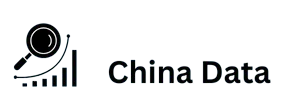After launching the new course “Python for Data Analysis”, we often got asked the question: “Why do we need Python at all if we have Excel?”
Content:
Automation and scale
Reproducibility
Endless Possibilities
Wide range of possibilities
Easy to learn Python
Results
Excel is the most popular database software, altho Data Analysis: How ugh there are many bulk sms ukraine alternative and more efficient solutions available today. Five years ago, Excel had over 750 million users. The population of the Earth at that time was approximately 7.6 billion people. So, about 10% of people used Excel, we can assume that the main task was data analysis.
schedule a job that re-extracts your data with any updates;
Excel has been a go-to tool for many companies, used by data scientists and analysts, but for most of their work there is a more efficient software – Python. And I will prove it to you.
If you haven’t yet started learning Python and taken your data visualization and analysis skills to the next level, I’ll give you five reasons why you should start learning it right now. I’m sure by the end of this article you’ll want to move most of your work from Excel to Python.
Automation and scale
When it comes to automation, Python is truly an amazing programming language. You can solve the following tasks:
connect Python to any data source;
compile reports;
perform the necessary calculations;
create a dynamic dashboard.
Python can save you a lot of time. Excel, on the other hand, requires too much manual canada data work and does not support automatic updates [comment from HOCK Training: perhaps this is due to the difficulty of updating data using standard Excel tools. Periodic updates in Excel can be easily done using VBA (macros) ].
Python can connect directly to your database to perform automatic updates. Image: NobleDesktop.
Excel is good for doing quick ad-hoc analysis on small data, but when you want to scale up, it won’t work. Excel can handle up to 1,048,576 rows on a page and up to 16,384 columns. Python, on the other hand, scales to any size and is limited only by your device’s memory, and has many tools that support calculations beyond that.
An example is the Dask library. It allows you to scale calculations not only on a PC, but also to how to develop a strategy for sustainable business growth and risk minimization run on a cluster. For those familiar with Pandas, this is similar code for reading in CSV:
It’s just a line of code, but it will allow you to read data that is much larger than your computer’s memory. I’d love to show you how to do the same in Excel if it were possible.
If you find this code challenging, start learning with our course . It has everything you need to get started with Python.
Python also scales to multiple data sources. Excel is a storage and calculation engine. Python is completely data agnostic. If you find a way to read your data in Python, you can work with it. Python has a lot of libraries, so reading data from a variety of sources (e.g. CSV, Excel, JSON, and SQL databases) is a common process.
